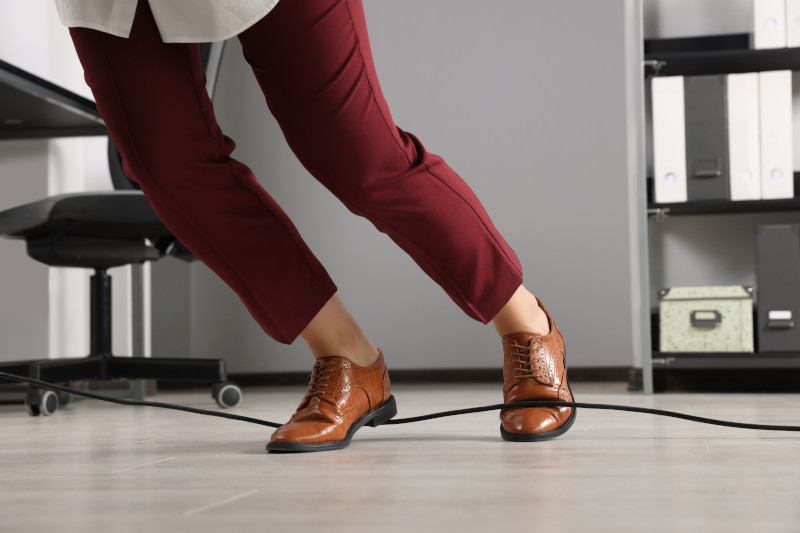Avoid neck and back problems at work

You probably wouldn’t be surprised to learn that neck and back problems are among the biggest risks for school district employees. Some studies have shown that more than one-third of American adults reported experiencing back pain. Depending on assigned duties, many school employees may spend much of their day standing or sitting for long periods, which can cause new pain or exacerbate issues they already have.
While there is no easy solution (especially if you suffer from chronic neck and back pain), there are steps you can take — such as better posture and stretching — to reduce your risk of these kinds of injuries.
Watch your posture
“Ergonomics” refers to the science of designing the job to fit the worker, rather than forcing the worker to fit the job. A big part of this is making sure your workstation minimizes strain-related injuries. The following are tips to improve your posture:
• Keep your head upright and over your shoulders.
• Position your computer so that your eyes look slightly downward, without requiring you to bend your neck.
• Make sure your table or desk is at the same height as your elbows.
• Keep your wrists in a neutral, or straight, position.
• Rest your feet flat on the floor. If this isn’t possible, then your feet should be fully supported by a footrest.
• Adjust your chair lumbar backrest to support the natural curve of your back.
• Bend your elbows at 90 degrees, with your forearms horizontal.
Stretch it out
Both neck and back pain can be equally miserable, but you can practice stretching exercises during your workday to either relieve pain or prevent it from occurring in the first place. Before beginning a stretching regime, consult with a licensed medical practitioner.
Neck exercises
Rotation: While sitting, bring your head straight up, then gently turn your head diagonally to the right so your nose is over your shoulder. Return to neutral. Repeat five times in each direction (left and right).
Head drop: Starting in a seated position, retract your neck. Slowly move your head up and backward as far as you can comfortably go. Return to neutral. Repeat 10 times.
Shoulder blade pull: While sitting, bend raised arms at 90-degree angles. Relax your shoulders
and neck. Keeping your arms and neck still, squeeze the muscles between shoulder blades, drawing shoulder blades closer together. Return to neutral. Repeat five times.
Other stretching exercises
Shoulder stretch: Standing with your back against the wall can be helpful with this stretch. Lift your upper arms to shoulder height. Bending at the elbows, point your forearms and fingers toward the ceiling with your open palms facing forward and attempt to press them into the wall. Hold the stretch here for 10 to 30 seconds and then slowly lower your forearms so your fingers are pointing to the floor and again pressing into the wall, if possible.
Chest stretch (standing or seated position): Open your arms to your sides with the palms facing forward. Start to press them behind you slightly by squeezing your shoulder blades in toward one another.
Back stretch: Sitting in a chair, lean forward from your hips, attempting to keep your back straight and your chin aligned with your spine. Reach your hands down your legs.
Check out these additional resources for more ways to keep your employees safe.




